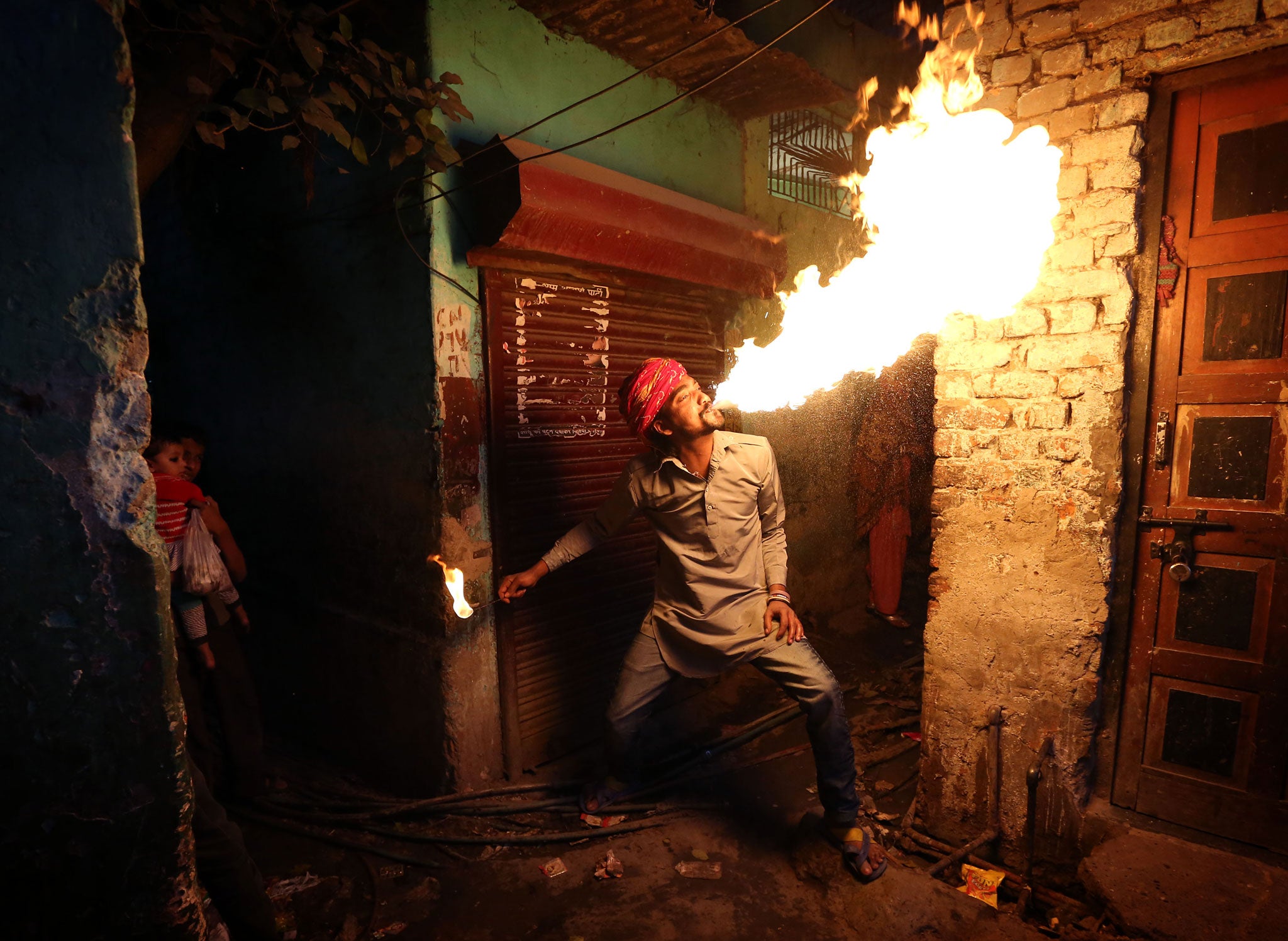Delhi's famed Kathputli colony of street artists is under threat from developers
The Kathputli colony in Delhi is famed for its dense population of puppeteers, acrobats, snake-charmers, musicians, dancers, actors and street performers. But with the city authorities intent on clearing the slum, its 20,000 residents are being forced to move on – and the area’s very vitality is at stake

Your support helps us to tell the story
From reproductive rights to climate change to Big Tech, The Independent is on the ground when the story is developing. Whether it's investigating the financials of Elon Musk's pro-Trump PAC or producing our latest documentary, 'The A Word', which shines a light on the American women fighting for reproductive rights, we know how important it is to parse out the facts from the messaging.
At such a critical moment in US history, we need reporters on the ground. Your donation allows us to keep sending journalists to speak to both sides of the story.
The Independent is trusted by Americans across the entire political spectrum. And unlike many other quality news outlets, we choose not to lock Americans out of our reporting and analysis with paywalls. We believe quality journalism should be available to everyone, paid for by those who can afford it.
Your support makes all the difference.Turn out of the train station, head along the jammed, honking road and then dive left into one of the alleyways. Immediately, you're surrounded by goats, children, smells, noise, people. And performers.
For more than 60 years, the street artists and performers of northern India have congregated in the cramped confines of the Kathputli colony of west Delhi. The name means "puppeteer", but you will also find singers and musicians, fire-eaters and conjurers. There is even one man who claims to have cracked the mysteries of the Indian rope trick.
The colony was celebrated in Salman Rushdie's novel Midnight's Children, and over the years has lured journalists and documentary-makers, who have been entranced by the skills of the street performers and the traditions they perpetuate.
Yet for some, more valuable than this cultural richness is the land on which the slum is situated. Best estimates put the population of the whole of the urban conurbation of Delhi at up to 25 million people, yet it continues to swell, filled by the constant rural-to-urban migration of people looking for work. The west of the city now extends deep into the state of rural Haryana.
The Delhi Development Agency, the government body which owns the land, has done a deal with a developer to clear the Kathputli colony and build new apartment blocks. Some of the properties will be sold at a sharply reduced rate to residents, while others will be sold at market price to the wealthy.
Kathputli is home to an estimated 20,000 people. Many, if not most, of the residents are anxious about moving. They say that the colony is inextricably linked to their livelihoods. They stable their animals there, they store their equipment beneath their tiny homes, and they feel comfortable that anyone looking to hire a performer or musician knows precisely where to come. How would that happen were the community to be broken up?
"When we moved here, this place was not fit for animals. But we have made it heaven," Mohammed Islam Azad, a poet and community leader, said at a public meeting last year.
So far, around 405 families have taken up the government's offer of buying at a reduced price and moved out to transit camps while the new blocks are being built, says Sunayana Wadhawan of the Delhi-based Hazards Centre group, who has been helping the residents. Yet she adds that many of these people had complained about the conditions in the camps. She also said the authorities were unfairly trying to claim that a "mafia" was forcing other residents to stay put. "That is not true," she insists.
Over the years, some of the journalists who have travelled to Kathputli have been in danger of over-romanticising the slum and its residents. In truth, it is no heaven. The alleys are narrow and cramped, and children defecate directly into the gutter. There is a shortage of water and electricity; in summer it swelters and in winter it stinks of smoke from fires. People's homes are tiny, patched shacks with floors of bare concrete. Activists, and residents themselves, have questioned why the politicians who visit the slum when it comes to election time are unable to provide even the most basic of facilities.
But the colony does brim with creativity and life. And it is this energy which is celebrated in Susannah Ireland's images on these pages. Whether it is a man breathing fire or a woman making puppets, her photographs capture the community's vitality and pulse. It is this that is threatened by the imminent arrival of the bulldozers. "They are worried about their livelihoods and how they will manage if they leave the colony," Ireland says. "That is more important to them than anything else."
Join our commenting forum
Join thought-provoking conversations, follow other Independent readers and see their replies
Comments